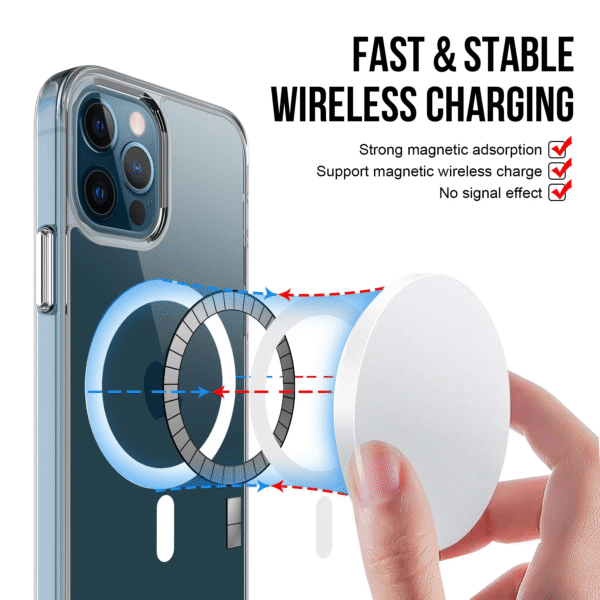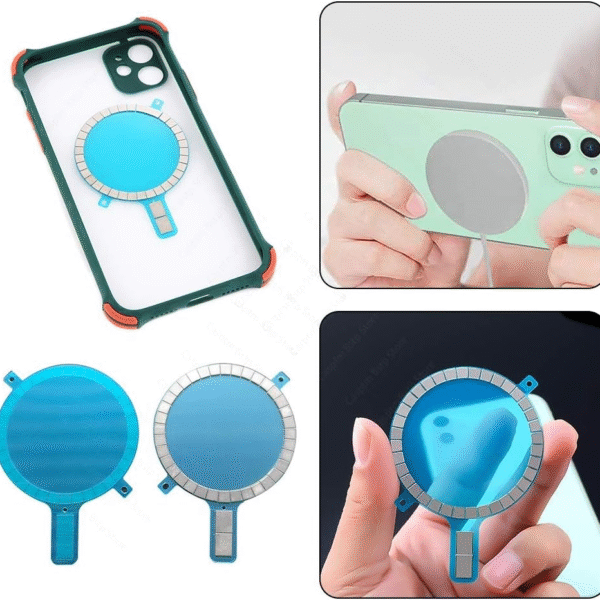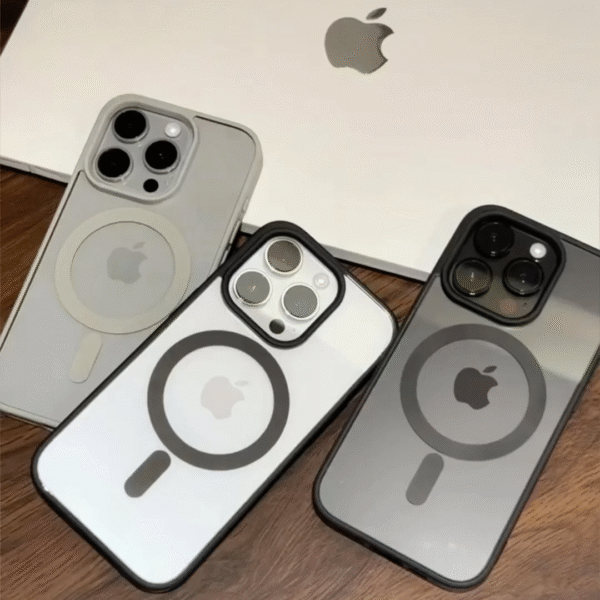MagSafe technology has revolutionized mobile device charging since its 2020 relaunch, with 87% of iPhone 15 users reportedly owning at least one MagSafe accessory. However, improper magnet selection can lead to:
- Safety risks: Weak adhesion causing device drops (12% of accessory returns linked to magnetic failures)
- Performance issues: Charging speed reduction up to 40% from misalignment
- Certification failures: 63% of first-time MagSafe accessory submissions rejected by Apple
To make MagSafe magnets stronger, manufacturers can use high-grade neodymium magnets, optimize magnet alignment, and improve shielding materials. These enhancements boost magnetic retention[1] and ensure a more secure hold between devices and accessories. MagSafe strength is also influenced by the accessory itself, while some MagSafe accessories have stronger magnets than others.

Many people assume that MagSafe cases merely allow magnetic attachment, but that’s not entirely true. Some cases include built-in magnets, while others just support MagSafe without adding magnetic strength.
Yes, MagSafe cases[2] have built-in magnets that align with the smartphone’s MagSafe ring. These magnets help attach accessories, but not all cases enhance magnetic strength. Some third-party cases may lack strong magnets, affecting grip reliability.
How Do MagSafe Cases Affect Magnetic Strength?
The strength of MagSafe magnets depends on several factors. Some cases contain additional magnet arrays, which can either enhance or weaken the connection depending on their quality and positioning.
| Factor | Impact on Strength | Recommendation |
|---|---|---|
| Magnet Grade | Higher grade = Stronger hold | Use N52 neodymium |
| Alignment Accuracy | Misalignment = Weak grip | Ensure precise placement |
| Case Thickness | Thicker = Weaker magnetism | Use thinner materials |
| Shielding Materials | Poor shielding = Magnetic loss | Choose proper shielding |
To improve MagSafe magnet strength, I recommend selecting cases with high-grade neodymium magnets[4] and proper alignment. Additionally, reducing case thickness and using efficient shielding materials can maximize magnetic efficiency.

I often hear confusion about MagSafe compatibility. Not every magnet works with it. This can frustrate users expecting seamless charging. I’ll explain what makes MagSafe special.
No, MagSafe doesn’t work with all magnets. It requires specific neodymium magnets[5] arranged in a precise ring pattern. At M-Magnet Company, we design stronger MagSafe magnets that align perfectly with Apple’s standards, ensuring efficient charging and attachment every time.
I’ve seen many customers ask this question when they try using random magnets. It’s not just about sticking something magnetic to your phone — it’s more technical than that. Let’s dive into why this happens and what I’ve learned from making magnets.
Why MagSafe Needs Special Magnets
MagSafe isn’t your average magnet setup. Apple designed it with a ring of neodymium magnets that sync with their devices. I’ve tested regular magnets, and they don’t hold or charge properly. The strength, shape, and alignment all matter[6]. At M-Magnet Company, we focus on crafting stronger MagSafe magnets that match these needs.
On the flip side, some argue any strong magnet should work. I get it—magnets attract metal, right? But MagSafe also handles wireless charging and data transfer. A random magnet might stick but won’t support the full system. I’ve seen this in our factory tests: only precise designs deliver.
Another angle is cost. High-quality neodymium magnets aren’t cheap. Some manufacturers cut corners with weaker materials. I’ve noticed this in competitor products—they fail faster. We prioritize durability over shortcuts.
Here’s a quick look at what makes a magnet MagSafe-ready:
| Feature | MagSafe-Compatible | Regular Magnet |
|---|---|---|
| Material | Neodymium (N52 grade) | Often ferrite or weaker |
| Shape | Ring with specific poles | Random shapes |
| Strength | High, precise pull force | Varies, often insufficient |
| Alignment | Matches Apple’s design | No standard alignment |
This table shows why I stick to Apple’s blueprint. Our stronger MagSafe magnets at M-Magnet Company hit every mark. I’ve shipped these to America and Europe, and customers notice the difference.
Think about your phone. You want it to charge fast and stay secure. A mismatched magnet risks both. I’ve learned this firsthand—precision beats guesswork every time.
How Long Do MagSafe Magnets Last?

Magnets seem permanent, but do they wear out[7]? Uncertainty worries buyers. A weak magnet ruins your MagSafe experience. I’ll share what I know from years.
MagSafe magnets can last 10~25 years with proper care. Their strength depends on material quality and usage. We use top-grade neodymium for stronger MagSafe magnets, ensuring they hold up through daily charging and attachment without losing power.
The Benefits of a MagSafe Case
In conclusion, a MagSafe case can significantly enhance the MagSafe experience by providing convenience and protection. However, it’s essential to weigh the benefits against the drawbacks and consider your specific needs and budget. Whether you choose an official Apple case or a third-party alternative, make sure it meets your requirements for functionality and compatibility. M-Magnet Company offers a range of high-quality neodymium magnets and customized solutions that can help you create or enhance your own MagSafe accessories.

In conclusion, a MagSafe case can significantly enhance the MagSafe experience by providing convenience and protection. However, it’s essential to weigh the benefits against the drawbacks and consider your specific needs and budget. Whether you choose an official Apple case or a third-party alternative, make sure it meets your requirements for functionality and compatibility. M-Magnet Company offers a range of high-quality neodymium magnets and customized solutions that can help you create or enhance your own MagSafe accessories.

